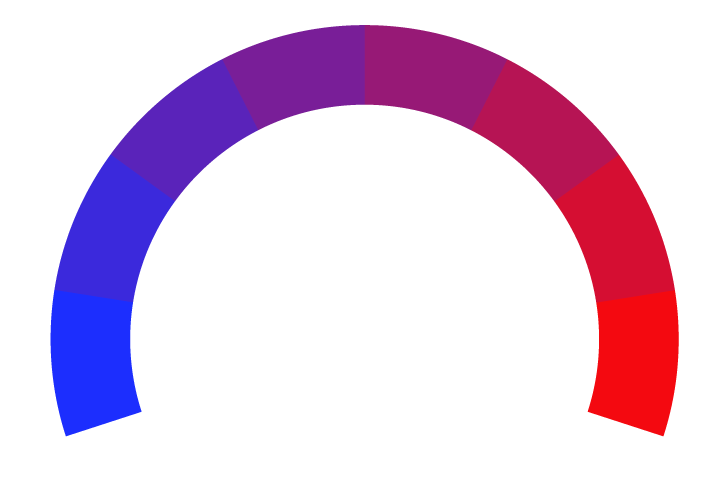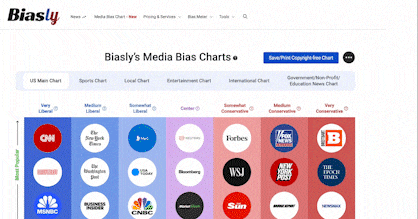Hogan's stance on criminal justice reform appears to be a mix of conservative and moderate approaches. As governor, he supported some reform measures, such as creating a council to find ways to reduce corrections spending and signing bills to help ex-offenders shield certain records to improve employment prospects. However, he also vetoed legislation that would have expanded felon voting rights and decriminalized drug paraphernalia. Hogan backed efforts to reduce recidivism and explore alternatives to incarceration, while still maintaining a "tough stance on crime." His approach seems to balance fiscal conservatism with some openness to reform, though not embracing more progressive measures.
Source: The Washington Post Hogan's stance on the economy leans conservative, emphasizing pro-business policies and tax relief. As governor, he promoted a five-point economic platform that included lowering taxes for retirees, increasing affordable housing access, reducing healthcare costs, and opposing policies that would raise prices on necessities. Hogan advocated for tax relief for working families, seniors, and small businesses, while also supporting accelerated housing construction and greater transparency in healthcare. He consistently opposed what he viewed as excessive taxes, spending, and regulations at all levels of government, arguing these factors drive up prices and harm small businesses and jobs.
Source: Maryland Matters Larry Hogan's stance on education leans conservative, primarily made evident by his veto of the Blueprint for Maryland's Future, a comprehensive education reform plan. This 10-year initiative aimed to expand pre-kindergarten programs, increase funding for schools in high-poverty areas, boost teacher pay and career opportunities, create new pathways for high school students not planning to attend college, and establish an accountability board. Despite the plan's development through extensive input and study by the Kirwan Commission, Hogan opposed it, citing concerns about its cost and implementation. However, the Maryland General Assembly ultimately overrode Hogan's veto to enact the legislation.
Source: Maryland Matters Larry Hogan's stance on energy policy has been mixed and somewhat inconsistent. While he supported offshore wind development and eventually backed a fracking ban, he also opposed clean energy legislation and supported some pipeline expansions. Hogan advocated for nuclear energy and pushed for a "Clean and Renewable Energy Standard" plan, though its details were criticized by environmental groups. His administration strengthened some emissions regulations but was also accused of underfunding environmental agencies. Overall, Hogan's energy policy combined some pro-renewable elements with continued support for fossil fuel infrastructure, reflecting a balancing act between environmental and economic concerns.
Source: Maryland League of Conservation Voters Hogan has a Somewhat Right stance on government dependency. As governor, he vetoed legislation to gradually increase the minimum wage and establish a paid family and medical leave insurance program, indicating a preference for less government intervention in the economy and social welfare. However, he also supported tax cuts and reducing the size of state government, which could be seen as a more fiscally conservative approach.
Source: The Baltimore Banner Larry Hogan's stance on healthcare appears to be relatively moderate, with some conservative and some liberal-leaning positions. As governor of Maryland, he signed the Contraceptive Equity Act, expanding access to birth control at no additional cost. He opposed Republican efforts to repeal the Affordable Care Act in 2017. Hogan has focused on healthcare affordability issues, particularly for prescription drugs. He supports bipartisan policies targeting pharmacy benefit managers, keeping Medicare Advantage premiums low, and increasing competition and transparency in healthcare. However, he also vetoed funding for Maryland's prescription drug affordability board, which he had previously supported creating.
Source: Stat news Larry Hogan's stance on immigration leans conservative, emphasizing border security and opposing policies that shield undocumented immigrants from federal enforcement. As governor, he vetoed bills aimed at protecting immigrant privacy and limiting cooperation with ICE. Hogan has made illegal immigration a key campaign issue, criticizing the "open southern border" and visiting the U.S.-Mexico border. However, he has also shown some moderation, such as initially welcoming Syrian refugees to Maryland. While Hogan advocates for stricter immigration enforcement, he has attempted to distinguish himself from more hardline Republican positions on the issue.
Source: Larry Hogan's Webstie Larry Hogan demonstrates a strong commitment to national security, aligning with traditional conservative views on this issue. He emphasizes the importance of American leadership on the global stage and advocates for robust support of U.S. allies, particularly Israel. Hogan criticizes isolationist tendencies in both parties and calls for strengthening NATO and other alliances. He supports providing aid to Ukraine in its conflict with Russia and takes a firm stance against Iran's aggression. While Hogan's approach to national security is decidedly conservative, he also stresses the need for bipartisan cooperation in addressing global threats, showing a willingness to work across the aisle on these matters.
Source: Larry Hogan's Website Based on the available information, Larry Hogan's stance on reducing the budget deficit appears to lean conservative. As governor of Maryland, Hogan prioritized fiscal responsibility and leaving a budget surplus. He focused on downsizing government, keeping agencies lean, and avoiding new long-term revenue streams. Hogan touts leaving behind a $5.5 billion surplus, tax breaks, toll cuts and a balanced budget during his tenure. However, critics argue this came at the cost of high vacancy rates in state agencies and reduced services. Hogan defended his approach as fulfilling his promise to shrink the size of state government through attrition.
Source: The Baltimore Banner Based on the available information, Larry Hogan's stance on the war on drugs appears to lean Somewhat Right, but with elements of a more balanced approach. As governor, Hogan established a Heroin and Opioid Emergency Task Force to address Maryland's growing opioid crisis. His administration focused on a comprehensive strategy that included expanding access to treatment, boosting overdose prevention efforts, and enhancing law enforcement capabilities to pursue drug traffickers. Hogan also signed a compact with other governors to fight opioid addiction, emphasizing both prevention and treatment alongside law enforcement measures. This approach suggests a recognition of addiction as a public health issue while still maintaining a strong stance on drug crime enforcement.
Source: Maryland Govenor's Offoice of Crime Prevention and Policy
| 























